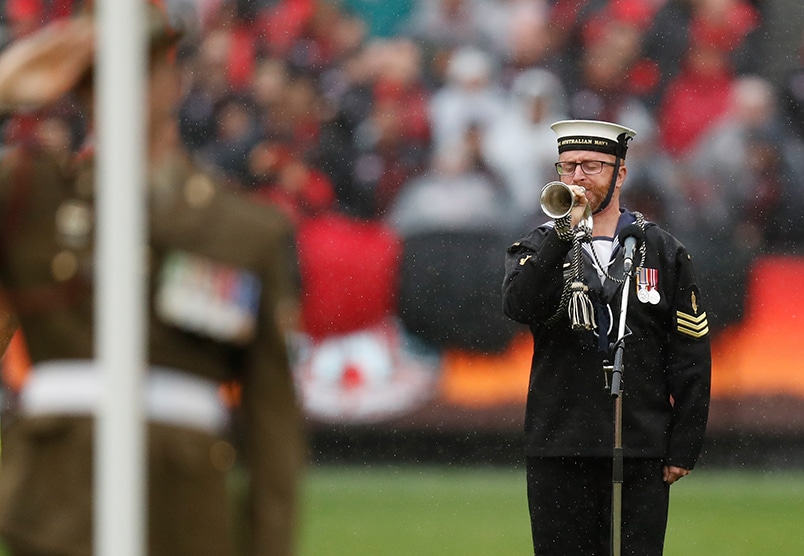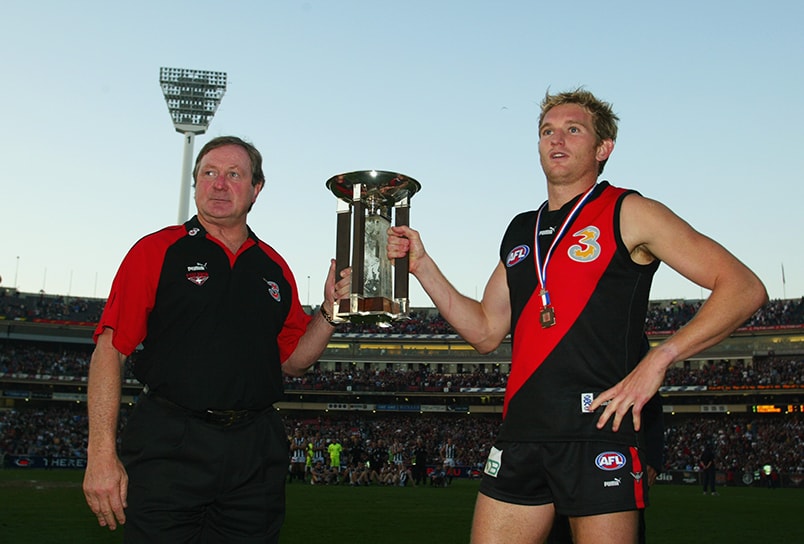Kevin Sheedy is football's most lateral thinker.
But even in the master coach and AFL legend's wildest dreams he couldn't have imagined the success an annual Anzac Day game between Essendon and Collingwood could become when the idea first popped into his head while in his garden.
This year marks the 25th season that the Bombers and Magpies have locked horns in the April 25 clash, in what has become one of the biggest games of every season and a poignant occasion.
But it wasn't always the way.
It was Sheedy's thinking in 1994 that led the way. As a player he had represented Richmond on Anzac Day in 1977, and his mind wondered back to that clash for inspiration.
The Essendon coach also looked at how war had impacted his own life, with a grandfather and uncle who served in the war. His father had also been in the army.
How could football honour those who served, including the legendary Anzacs (Australian and New Zealand Army Corps) of World War 1 in the best way possible?
Sheedy's vision was to stage the Essendon and Collingwood contest at the MCG every year. And so the Bombers and Magpies, through football manager Graeme Allan, met to thrash out the concept, and included the Returned and Services League (RSL) on the meeting.
For anything to proceed, Sheedy knew the RSL needed to be on board. It, and its then Victorian president Bruce Ruxton, was.
The next year, the clubs met in front of a sellout crowd of almost 95,000 fans (approximately 20,000 people had to be turned away at the gates) and played out an historic and memorable draw. Sheedy would have preferred the win but must have left the ground with a smile that afternoon knowing what had been created.
Aside from an entertaining contest, the game proved that sport could appropriately celebrate the Anzacs without overriding or upstaging their day.

The Anzac Day game has proved that sport can appropriately celebrate the Anzacs. (Photo: AFL Media)
Football, clearly, had not always enjoyed close ties to Australia's most patriotic day. Anzac Day was established in 1916 to commemorate the landing of the Anzacs a year earlier at Gallipoli in Turkey for World War 1. A government rule then stopped organised sport being played on Anzac Day.
The League was able to work around the staging difficulty, given games were then only played on Saturday afternoons. But in 1958 parliament lifted its ban on sport on the day, and two years later, the League scheduled a game for Anzac Day and attracted criticism for the move.
There was disjointed views from the League and the RSL about the best way to schedule games, and over a number of years the VFL showcased games not involving its strongest clubs on the day.
The League continued to experiment with Anzac Day contests in the 1970s and '80s with mixed success before Sheedy's blueprint came to the fore.
It is now difficult to imagine a football season without the blockbuster contest involving the two clubs, and many feel that the game – including a motorcade of veterans and the playing of The Last Post to an always completely silent MCG crowd – has helped restore Anzac Day's significance in Australia.
It has also produced spectacular moments and memories on the field, from young Bomber David Zaharakis' match-winning goal in 2009 to James Hird's brilliant performances on the day (he won three Anzac Medals across his glittering Essendon career).

Kevin Sheedy and James Hird - two names synonymous with the Anzac Day game. (Photo: AFL Media)
Collingwood, too, has had its share of brilliant efforts in a game that has become the biggest home and away contest on the AFL calendar and a tradition that looks set to continue for many years.




